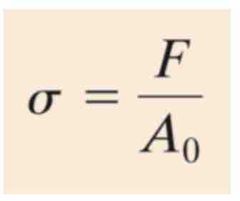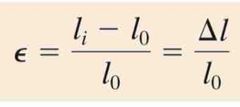![]()
![]()
![]()
Use LEFT and RIGHT arrow keys to navigate between flashcards;
Use UP and DOWN arrow keys to flip the card;
H to show hint;
A reads text to speech;
14 Cards in this Set
- Front
- Back
|
Important Mechanical Properties |
▪ Strength ▪ Hardness ▪ Ductility ▪ Stiffness |
|
|
If a load is static or changes relatively slowly with time and is applied uniformly over a cross section or surface of a member, the mechanical behavior may be ascertained by |
Stress-Strain Test |
|
|
Three principal ways in which a load may be applied: |
▪ Tension ▪ Compression ▪ Shear |
|
|
can be used to ascertain several mechanical properties of materials that are important in design. |
The tension test |
|
|
is designed to elongate the specimen at a constant rate, and to continuously and simultaneously measure the instantaneous applied load (with a load cell) and the resulting elongations (using an extensometer). |
The tensile testing machine |
|
|
is used in ductility computations |
Gauge length |
|
|
Standard value of gauge length |
is 50 mm (2.0 in.) |
|

Front (Term) |
Engineering Stress |
|

Front (Term) |
Engineering strain |
|
|
is conducted in a manner similar to the tensile test, except that the force is compressive and the specimen contracts along the direction of the stress. |
compression test |
|
|
is a variation of pure shear, wherein a structural member is twisted |
Torsion |
|
|
produce a rotational motion about the longitudinal axis of one end of the member relative to the other end. |
torsional forces |
|
|
is a function of the applied torque T |
Shear stress |
|
|
is related to the angle of twist |
Shear strain |

